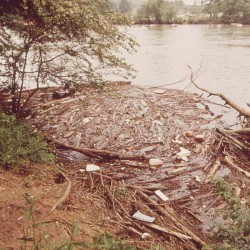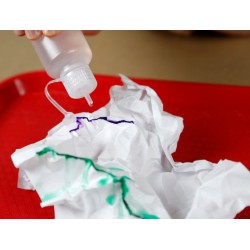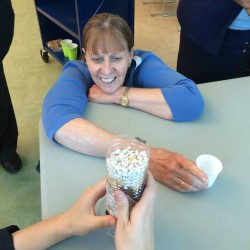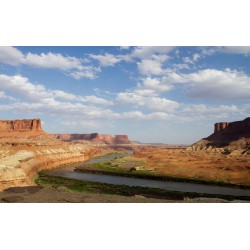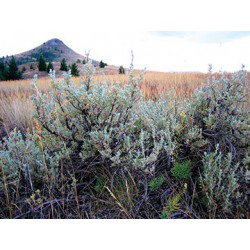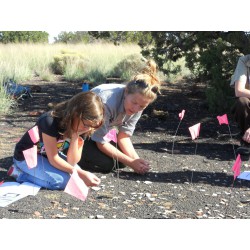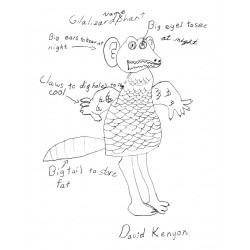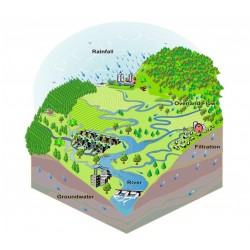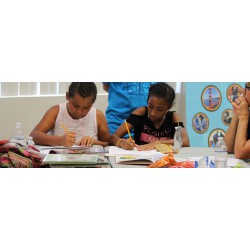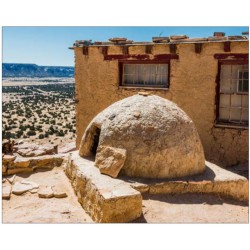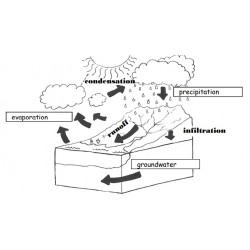Sort
New items
-

Speculative Stories
In this flexible activity patrons imagine future uses of AI tools, and...
-

Ethiquest
In this short activity patrons consider the ethical dilemmas posed by...
-

Data Bites
Patrons create a paper supervised learning machine, and use it to sort...
We Are Water There are 29 items.
This collection is centered around the We Are Water project that supports rural communities and their libraries in educating patrons about the importance of water in the Four Corners Region.
-
Who Dirtied the Water: A Role Playing Activity
Participants take turns adding pollutants to a gallon jar of water (which symbolizes a local body of water) as the facilitator reads a story about water pollution. 0
Check It Out
How-to Video -
Exploring Earth: Paper Mountains
This hands-on activity uses crumpled paper, marker ink, and water to demonstrate how the shape of the land and the pull of gravity influence how water moves over the Earth. 0
Check It Out
How-to Video -
Shower Estimation
1 Review(s)Participants calculate and chart the amount of water they use during a shower and then compare it with members of their household. 873
Check It Out
How-to Video -
Low-Tech Water Filter for High-Impact Clean
Participants consider the water features they might enjoy at a community park — a pond, brook, water playground (or “sprayground”), or pool, — and what happens to thewater over time. 0
Check It Out
How-to Video Implementation Guide Provides extensive background information, facilitation outline, materials shopping list, extended supporting media suggestions, correlations to national standards, and more. Teacher's Guide Provides classroom connections, key concepts, connections to science standards, and additional resources. -
Imaginary River Trip
Participants learn about how plants, animals, and humans need water to survive by going on an imaginary river trip narrated by the facilitator. A link to the activity’s PowerPoint slides can be found below in the “related links” section. 0
Check It Out
-
Plant Adaptations
Participants explore four stations to compare different plant adaptations in desert and riparian environments, as well as plants and animals adapted to nighttime activities. 0
Check It Out
-
Water Hunt Maze Activity
Participants play a game using dice and a maze while learning about how people collected water in the past. 0
Check It Out
-
Adaptation: A Way of Life
Participants conduct a series of hands-on experiments and demonstrations to observe adaptations desert plants have that help them conserve water in the arid environment. 0
Check It Out
How-to Video Implementation Guide Provides extensive background information, facilitation outline, materials shopping list, extended supporting media suggestions, correlations to national standards, and more. -
A Watershed Community
Participants learn about elements of a healthy watershed and build a model of it on butcher paper. Then, they add human elements to the watershed and learn about how humans can positively and negatively affect the health of a watershed. 0
Check It Out
-
First Come, First Served
Participants role-play various scenarios of competing water use as they learn about water rights and the principles of how water is "allocated" or divided in watersheds. 0
Check It Out
-
Ancestral Pueblos
This series of activities helps patrons develop a basic understanding of the Ancestral Pueblos of the Southwest United States - where they lived, what they lived in, and how they lived. The last section is focused on the Puebloan people of today. 0
Check It Out
-
Desert Waters
Patrons learn about the water cycle and different types of habitats found in the desert by watching a video, participating in a discussion, and exploring a worksheet. 0
Check It Out



